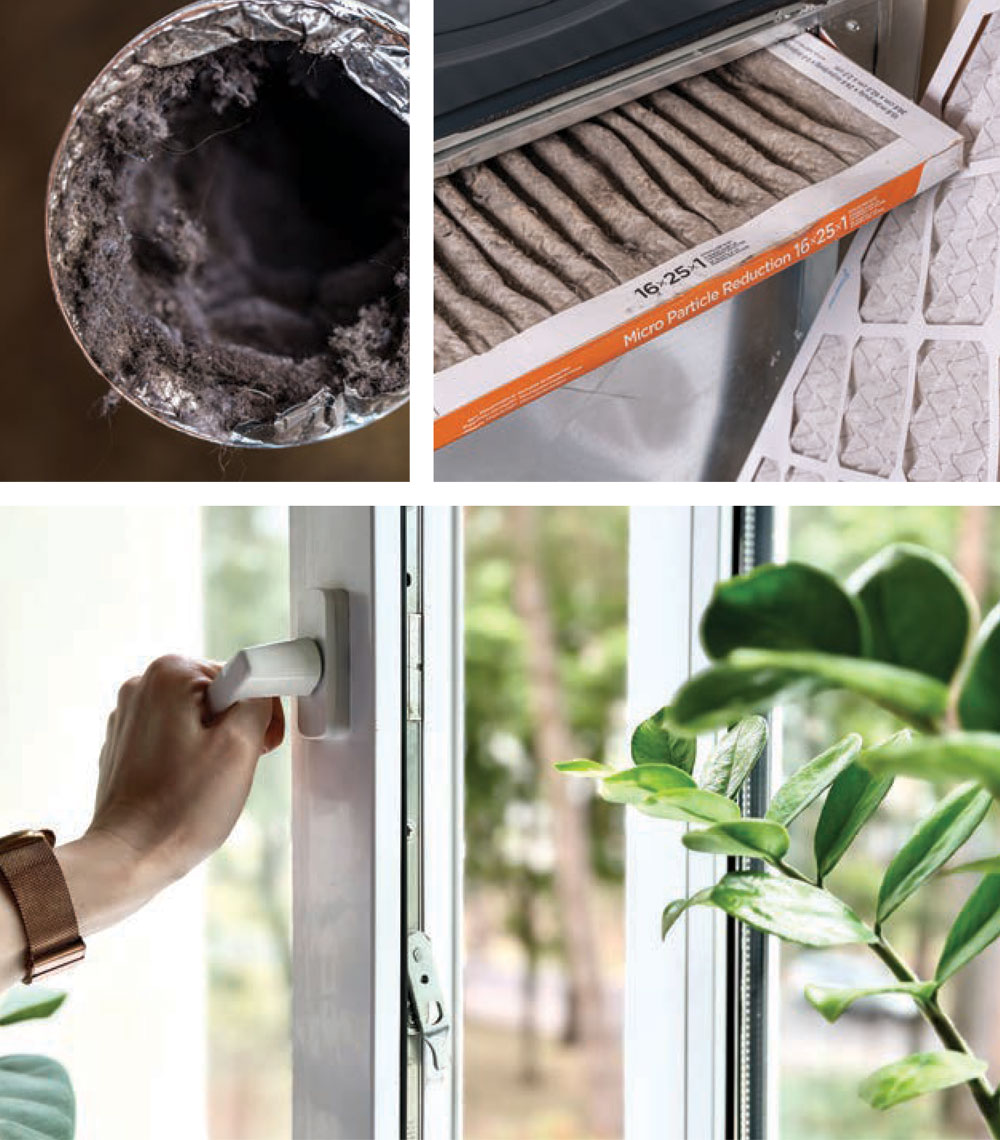BREATHE EASIER
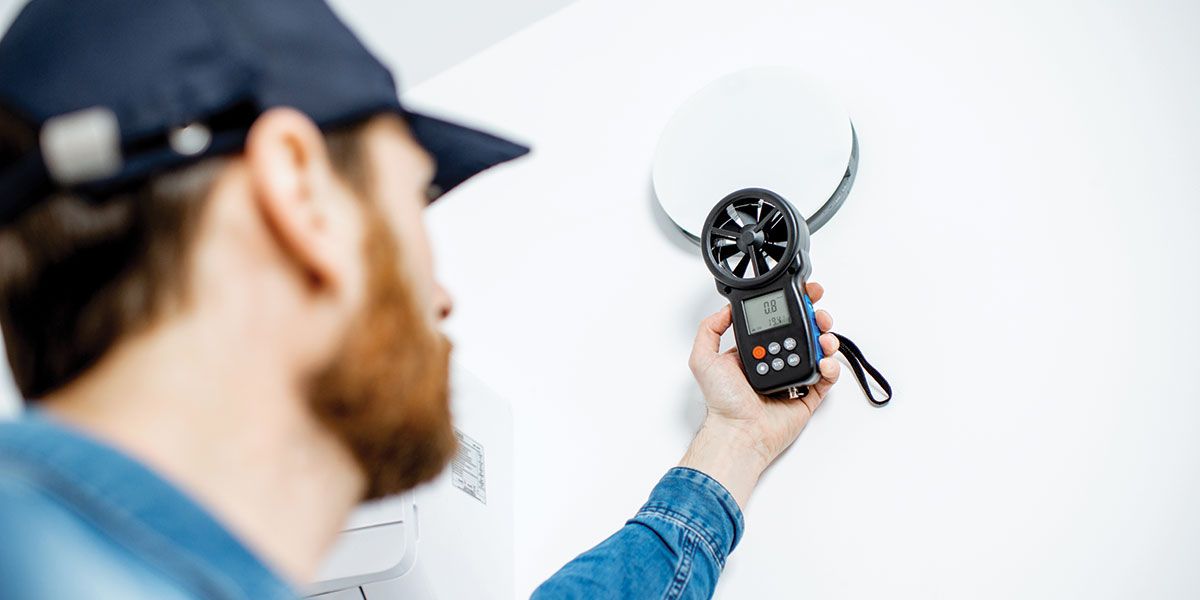
8 Steps to Better Air Quality
In the pursuit of creating a cozy and comfortable home, the air we breathe is often overlooked, yet the quality of indoor air plays a significant role in our overall well-being. The average person spends about 90 percent of their time indoors, making the quality of the air we breathe inside a critical factor in our health.
For some great tips to help you create a healthier living environment, we sought expert advice from Mark Flanary, General Manager of Bower Heating and Air, a local HVAC company. Let’s explore some annual practices and helpful tips that can contribute to improving your home’s indoor air quality.
Before delving into the actionable steps, it’s essential to understand what contributes to indoor air pollution. Common culprits include dust, pet dander, mold, pollen and volatile organic compounds (VOCs) emitted by household products. Inadequate ventilation, particularly in well-sealed homes, can exacerbate the issue, leading to a range of health problems. Flanary states that checking your air filters is the best way to monitor your air quality. Additionally, UV lights and ion generators can be installed on the HVAC system and will help in killing viruses and mold.
Poor indoor air quality can contribute to a range of health issues, including respiratory problems, allergies and fatigue. Long-term exposure to indoor pollutants has also been linked to more serious conditions such as asthma and cardiovascular diseases. Identifying signs of poor air quality is crucial for prompt intervention. According to Flanary, “Seeing high volumes of dust, floating dust particles and dirt present on the grilles of your HVAC system are great indicators of poor indoor air quality. Also, reoccurring sickness can be an indicator.” Health symptoms associated with poor air quality include odors, coughing, sneezing, itchy/watery eyes and headaches. If you notice any of these symptoms persisting, it’s time to investigate and improve your indoor air.
Regarding known pollutants in our region, Flanary adds, “This area is known for radon issues. I’d recommend having a radon specialist check the home periodically. This isn’t connected or solved by the HVAC system, however, important to know as there are solutions for this.”
Here are some tips for ensuring great air quality in your home:
1. VENTILATION IS KEY
Proper ventilation is the foundation for good indoor air quality. In the Roanoke Valley, where weather conditions can vary, it’s crucial to strike a balance between energy efficiency and ventilation. Regularly open windows and doors to allow fresh air to circulate, especially during moderate weather. You should also use exhaust fans in the bathroom and kitchen to prevent odors or excessive humidity.
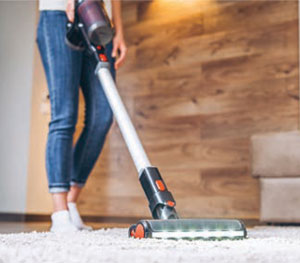 2. MAINTAIN A CLEAN ENVIRONMENTA clean home is a healthy home. Regular cleaning habits can significantly impact indoor air quality. Dust and vacuum surfaces, carpets and upholstery frequently. Use a vacuum cleaner equipped with a high-efficiency particulate air (HEPA) filter to capture smaller particles that traditional vacuum cleaners might miss. Don’t forget to clean or replace HVAC filters regularly, ensuring efficient air circulation and filtration.
2. MAINTAIN A CLEAN ENVIRONMENTA clean home is a healthy home. Regular cleaning habits can significantly impact indoor air quality. Dust and vacuum surfaces, carpets and upholstery frequently. Use a vacuum cleaner equipped with a high-efficiency particulate air (HEPA) filter to capture smaller particles that traditional vacuum cleaners might miss. Don’t forget to clean or replace HVAC filters regularly, ensuring efficient air circulation and filtration.
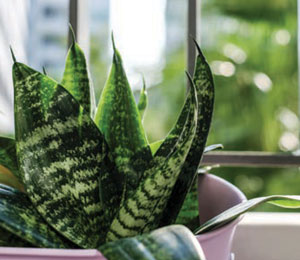 3. INTEGRATE HOUSEPLANTS
3. INTEGRATE HOUSEPLANTS
Houseplants are not just aesthetic additions to your home; they can also act as natural air purifiers. Plants like spider plants, peace lilies and snake plants are known for their ability to filter out common indoor pollutants. Embrace the lush greenery and bring it indoors for a breath of fresh air! See more on houseplants by clicking here.
4. BE MINDFUL OF HOUSEHOLD PRODUCTS
Many household products release harmful chemicals into the air, contributing to indoor pollution. Opt for low-VOC or VOC-free paints, cleaning products and building materials. Choose natural and eco-friendly alternatives when possible
5. HUMIDITY CONTROL
Excess humidity can contribute to mold growth and dust mites, negatively impacting indoor air quality. Invest in a dehumidifier to maintain humidity levels between 30-50 percent. Additionally, ensure proper ventilation in areas prone to moisture, such as basements and bathrooms.
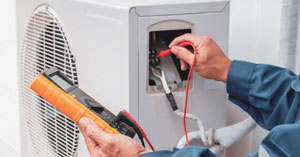 6. REGULAR HVAC MAINTENANCE
6. REGULAR HVAC MAINTENANCE
Your HVAC system plays a crucial role in maintaining indoor air quality. According to Flanary, “First and foremost, keep air filters clean. This is important both for air quality as well as keeping equipment operating at peak efficiency. Second, have systems maintained — a dirty indoor coil is going to cause high bills and is a breeding ground for mold.”
7. CONSIDER AIR PURIFIERS
For an extra layer of protection, especially for those with allergies or respiratory conditions, consider using air purifiers. HEPA filters can capture small particles, including dust, pollen and pet dander. Place air purifiers in commonly used areas, such as bedrooms and living rooms, to create designated clean-air zones
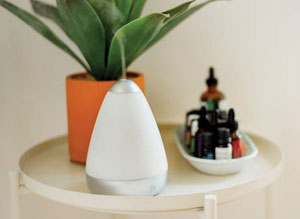 8. BE CAUTIOUS WITH HOME FRAGRANCES
8. BE CAUTIOUS WITH HOME FRAGRANCES
Many commercial air fresheners contain VOCs that can contribute to indoor air pollution, so one should be cautious in what is chosen as home fragrance. Flanary suggests, “In lieu of home fragrances, it can be helpful to give a 30-second spray of a disinfectant product, such as Lysol, into the return when you change the air filter while the fan is running to disperse throughout the duct system.”
You can also consider natural alternatives such as essential oil diffusers, potpourri made from dried herbs and flowers or simply ventilating your home with fresh air. These options not only add a pleasant scent but also contribute positively to indoor air quality.
When home is synonymous with comfort, taking steps to improve indoor air quality is an investment in the health and well-being of yourself and your loved ones. Creating a home with superior indoor air quality involves a combination of annual practices, vigilant observation and informed decision-making. By incorporating these practical tips, you can transform your home into a sanctuary where the air is as fresh as the memories you create within its walls. Breathe easy, friends! ✦
air purifiers, asthma, breathe, cardiovascular diseases, Dust, Fragrance, Houseplants, humidity, inadequate ventilation, indoor air pollution, indoor air quality, indoor pollutants, mold, pet dander, pollen, volatile organic compounds
